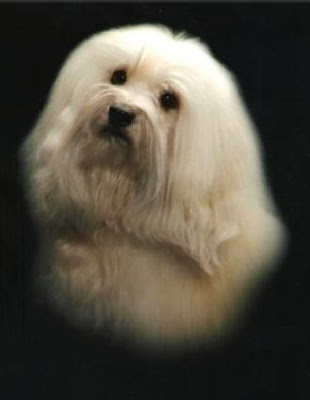.jpg)
Mentioned below is a direct quote from an article, entitled “A Dog Detective Does a Scotland Yard Job” that was published by Al Testado, who’s a Times Sports Editor.
"The McNab Dog is truly a unique breed in that it is a native stockdog of Northern California via the Grampian Hills of Scotland. The first mention of this breed is in 1885 during the ranch and farming days of the young state of California. Alexander McNab came to the United States from Glasgow, Scotland in 1868 and settled on a large spread which is now known as the McNab Ranch. A year later he returned with his young family and a Border Collie. In 1885, sixteen years later, he returned to Scotland for the expressed purpose of obtaining new sheep dogs. He purchased two Border Collies from the Grampian Hills of central Scotland named Peter and Fred.
Peter worked either lead or drive, while Fred was strictly a lead dog. These two, breeding with selected females, originated in the United States, the line of McNab shepherds. The original stock was supported from time to time by importations from Scotland. Border Collies are of two varieties, long haired and short haired. The long haired type is particularly adapted to the severe weather of Scotland, but the dry, steep ranges of Mendocino County required a short-haired dog, both because of the summer heat but also on account of the burs, fox-tails, and stickers which are not picked up so easily by the short-haired dog. For these reasons, the importations by the McNab family have been mostly of the short-haired type.
A McNab differs markedly in appearance from the usual English Collie. The McNab dog breed is medium size, alert and cat-footed, has a black coat with white markings -- white muzzle with a white streak running up the head between the eyes, usually a white neck and chest, white tipped tail and one or more white feet. Its ears are medium sized and somewhat pointed; usually the upper half of the ear flops over. The tail is not bushy. These dogs have been bred primarily for performance in working stock--not for color conformation -- although experience has shown that the best performance usually is obtained from the original type."
Often McNabs dog breed are also confused with the Australian Kelpie, because the look is very much the same (reddish-brown coat, short-haired dog and of almost the same size). But a Kelpie has the ears fully erect and bushy tail, while the ears of McNabs are not fully erect and the tails are not bushy.




 Well, I am sure that you are interested in dog world and canine breed -- otherwise you wouldn't have dropped by "Welcome Dog Lovers" (WDL). Often people ask me, which breed of dog should be the right choice for them. The answer is not as simple as "the one that fascinates you the most"!!! Not again a big deal either. All you need to understand the dog breeds. Here's a simple guide that may help you understand what a canine breed actually is.
Well, I am sure that you are interested in dog world and canine breed -- otherwise you wouldn't have dropped by "Welcome Dog Lovers" (WDL). Often people ask me, which breed of dog should be the right choice for them. The answer is not as simple as "the one that fascinates you the most"!!! Not again a big deal either. All you need to understand the dog breeds. Here's a simple guide that may help you understand what a canine breed actually is.